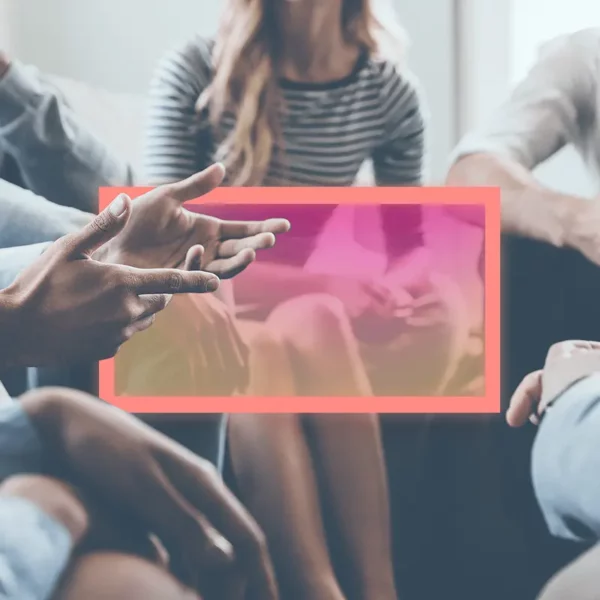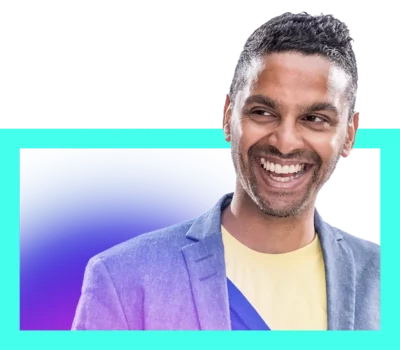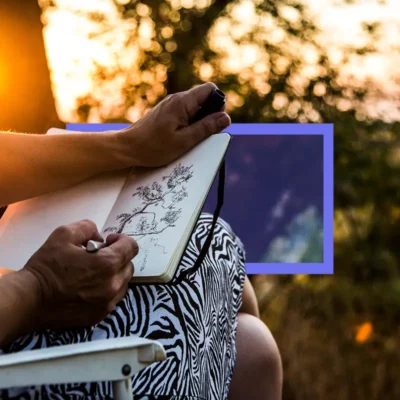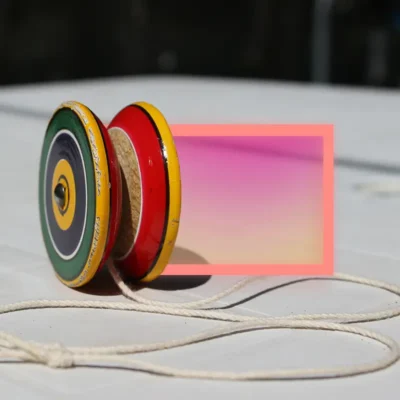The power of a simple loving presence
Hannah Cross is a licensed clinical social worker, devoted to helping people with emotional and behavioral concerns. The way she approaches her work is rooted in a life-changing early job, one she almost didn’t take — at a youth incarceration center. Working with these young people, she comes to realize that while the textbook approach might sometimes fail, there’s a reliable healing power in a simple, loving presence. This insight helps her see her own younger self anew, and embrace her past.


Table of Contents:
Transcript:
The power of a simple loving presence
HANNAH CROSS: I sit in my university advisor’s office. We’re talking about where to do my final internship. He knows me well, and he looks at my resume once more. Then he looks up and says, “You should apply to Mill Creek Youth Center.”
I shake my head no. “I can’t do that. I don’t know how to work with adolescents.”
He tilts his head and says, “Well, you were one, right? Don’t you remember what it was like to be a teenager?
ROHAN GUNATILLAKE: Hannah Cross is a Licensed Clinical Social Worker who helps people with emotional, social, and behavioral concerns. Her work utilizes evidence-based therapy which is often effective, even life-saving. But in today’s Meditative Story, she discovers that when the lessons from your textbooks fall short, it’s our ability to show up as a genuine loving human being that’s the first step toward healing others, and yourself.
We’d also like to let you know in advance that this episode explores themes of addiction and incarceration, should these be sensitive subjects for you.
In this series, we combine immersive first-person stories, breathtaking music, and mindfulness prompts so that we may see our lives reflected back to us in other people’s stories. And that can lead to improvements in our own inner lives.
From WaitWhat, this is Meditative Story. I’m Rohan, and I’ll be your guide.
The body relaxed. The body breathing. Your senses open, your mind open, meeting the world.
CROSS: I flip on the car radio, keeping one hand on the steering wheel. And I look up at the sky, cloudless today, a beautifully clear blue. My gaze shifts to the open road ahead.
I drive down 12th Street, passing the familiar landmarks of my hometown of Ogden, Utah. There’s Smith’s Food and Drug on the left. The Ogden Nature Center up ahead. I’ve driven by them hundreds of times. But today, I’m going somewhere I’ve never been.
I follow a gray sign that reads, “Juvenile Justice Services: Mill Creek Youth Center.”
I pull my car up to a metal gate surrounded by a tall chain-link fence. Barbed wire snakes its way along the top. I push the intercom button. “Hi, I’m here for an interview.” A gruff voice replies “Ok.” The gate grinds open. Once inside, there’s a lot of sunbaked asphalt, coarse cement and more metal fencing.
Mill Creek is a long-term secure care facility for incarcerated youth — in other words, kid prison. And it does look like a jail. Tan cinder block walls. Cells with metal doors and cement slabs where the youth sleep. The windows are just slits of glass that don’t let in much light. The compound is gray and grim.
I think back to four years ago, when coming here was completely out of the question:
I sit in my university advisor’s office. We’re talking about where to do my final internship. He knows me well, and he looks at my resume once more. Then he looks up and says, “You should apply to Mill Creek Youth Center.”
I shake my head no. “I can’t do that. I don’t know how to work with adolescents.”
He tilts his head and says, “Well, you were one, right? Don’t you remember what it was like to be a teenager?”
I pause. That’s the thing, I don’t really remember, because I’ve tried to block that part of my life from memory. My teenage years took me to dark places that I’m not eager to revisit. Teenage Hannah was depressed, and alone, and an addict. Since getting clean, my instinct has been to run full speed away from that version of myself. I have no love for the person that I was.
After graduation, I get my license in psychotherapy and choose to work only with adults. But then, three years later, it’s late one evening and I’m inching my way through my patient charts on my laptop when suddenly I sit up. It’s like a lightning bolt strikes, and I feel this clarity that while the work I’m doing is valuable, the roots of so many of my clients’ problems begin in childhood. That’s where so much pain starts and, maybe, that’s where some of the most important healing takes place. My urge to provide that healing overrides my dread. Mill Creek is the first place I apply.
I make my way up to a drab concrete building with a steel door. I’m buzzed in. I’m ushered through a set of metal detectors, and past a control center full of surveillance monitors.
I make eye contact with two of the facility staff, and I see the way they’re looking at me like I don’t belong here. I’m a 5-foot-2, 105 pound, blonde, white, female. What could I possibly understand about the lives of the kids in this facility? My gender, my race, my privilege — I look like I’d have nothing in common with them. A wave of imposter syndrome washes over me. Do I have any clue what I’m walking into?
I take a deep breath. I remind myself … I have a social work degree. I’m a licensed therapist. I know I can rely on my textbooks, my therapy modalities. With the tools of my training, I walk through the dull halls with an uncanny sense of deja vu. Like I somehow know this moment. And this is where I choose to be.
GUNATILLAKE: Hannah is being called to trust her intuition as it leads her into a place that is yes, uncomfortable, but also an opportunity for learning. Where in your life can you cultivate that quiet voice of encouragement to help you embrace uncertainty and trust your intuition.
CROSS: My tiny office glows with the warm light from lamps I’ve brought from home. One of the first things I do when I get the therapist job at Mill Creek is to make this space more inviting.
I stack books about spirituality and art on the shelves next to a little couch. Sticky adhesive on the walls holds up a string of colorful prayer flags and tattoo-style drawings by some of the youth. In one corner hangs a poster from the Lion King where little Simba looks up at an expansive reflection of himself. It says, “Remember who you are.”
Mark enters and sits on the couch. He’s 16, has brown disheveled hair. His expression is often anxious and shameful, but I catch glimpses of youthful enthusiasm when he forgets my presence. His casefile says that Mark was born addicted to meth and adopted into a family that has more kids than they know what to do with. His attachment disorder can lead to violent tantrums. Mark was tricked into treatment multiple times. Someone would tell him, “We’re going to go visit a family member,” and then next thing he knows, he’s in a treatment center. He’s learned time and time again that trusting others is dangerous.
But I feel optimistic about helping Mark. There’s a therapy modality from my training I want to try with him today: It’s called EMDR, eye movement desensitization and reprocessing. I’m excited about the potential of this tool, and I start by asking Mark to move his eyes from side to side and follow the back and forth motion of my finger as I work with him to re-process a memory tied to his inability to trust. I follow the protocol precisely. But we get nowhere. All that comes up are feelings of mistrust and anger. They loop on repeat. No new insights, like I typically see. I try again and again and again, adapting the protocol. Nothing.
I don’t understand why. Mark is the perfect candidate for this therapy. The modality is evidence-based.
We take a big pause. “Mark, do you want to change this?” I ask gently. “Do you want to trust people?” He almost laughs, “Hell no. After I leave your office, I have to walk back down there on this unit where I can’t trust anybody. It is not a good idea for me to. So no, I’m not gonna change that.”
I sit back in my chair. It’s like I’ve been smacked in the face with the obvious. Why would I bring in a modality to work on this right now when he can’t develop trust in this environment? It’s practically impossible to heal from trauma when you’re still going through it.
The kids who come in for sessions tell me about the gangs that operate on the streets of their neighborhoods, the police raids and overdoses and abuse they’ve seen. Hearing this is my job. But, I’m also human. And sometimes listening to their stories, my heart breaks. Story after story, I sit with how human life can be so out of control, so painful, so lonely.
It resurfaces my own difficult memories from adolescence, and the part of myself that I’ve rejected. Gradually, I peer backwards.
At 17, my life begins to spiral. I fall into a deep depression as a freshman at Johns Hopkins. It’s debilitating. I have to drop out. When I first try heroin, it feels like relief from my pain, but the relief doesn’t last very long. My addiction progresses quickly. Before I know it I’m living out of my car, panhandling for money to sleep in rough motels, associating with people who scare me. I’m completely disconnected from my family. I resort to selling my body. I’m alone in all of this, battling my own self, drowning in hopelessness.
My journey has been different from the kids at Mill Creek, but I know what it’s like to feel like things are out of control. The sense of abandonment and fear. I see my younger self. Someone who also needed help. Who needed someone to reassure her with love.
I tell Mark we’re done for the day. This session has been humbling. I’d come in with my own righteous ideas of what I could do as a therapist, but Mark’s wisdom about his own circumstances is so much closer to the truth of what he needs now. Rather than being fully present and open to that, I imposed my own beliefs.
There’s nothing I can do to change the bigger circumstances of these boys’ lives, but I still want to be here for them and help, however I can. I need to try something different.
GUNATILLAKE: Is there somewhere in your life where tried and true approaches aren’t providing the solution to a challenge you’re facing? Gently put the need for a specific solution aside. What might it feel like if you drop back and consider a wider set of possibilities. Give this moment some space.
CROSS: I throw open the back door of my house and walk across the lawn. Mount Ogden with its soaring peaks lingers in the distance. It’s a warm day. I pause and take in the feeling of the sun hitting my skin. Simple pleasures mean a lot to me these days.
I hunt around the edge of my yard, gently moving dead leaves aside with my foot. I search for something. Something that’s not from one of my textbooks, but could help the kids be present with each other, and connect. Something to make them feel like they are more than what they’ve been through.
I remember how important that was to me to be seen as a whole person again. As someone who is capable. I have no problem seeing the kids at Mill Creek as capable. They tell me they want to be rappers, and barbers, and I see that for them. Full of potential. I want to help them see that for themselves.
At the far end of the lawn, I find exactly what I’m looking for, a stick. Dark brown. Woody. About half the length of my arm. I hope it’s exactly what I need.
The next day, I sit in a circle of metal folding chairs with a group of kids and staff members. Fluorescent lights flicker overhead in the concrete room. We’re here for another session of DBT, Dialectical Behavior Therapy, which we’ve been doing together for a few weeks.
I learned about DBT in my training. It’s a set of skills and exercises to help regulate your emotions when your behavior is uncontrolled. It’s another modality that should work, but in this environment, it doesn’t. I can tell from their slouched shoulders and bored expressions that nobody wants to be here.
I clear my throat and say, “We’re actually not going to do DBT today.” That gets their attention. From my bag, I pull out the stick from my backyard. “This is a talking stick,” I say. ”We’re going to pass it around, and whoever is holding it will say something positive about another person in the room.”
There are a couple laughs, and many confused expressions. I try to keep a confident smile on my face, but I have no idea if this is going to work. I see a few kids lean forward in their seats. I can see the intrigue in their eyes. This is something new.
I look around at each of them and say, “Let’s have some fun. Let’s find what it is that we love about our brothers in this room. I’ll start.” I face Mark and say, “I love how self-reflective you are. Every time we talk, you share something new you’ve learned about yourself.” I pass the stick to my right, and a boy named Louis takes it from me. “Anthony, I like how we always win spades when we are partners.” One by one, we go around. Each message of praise and respect wipes away any resistance to participate. Smiles build as the stick makes its way around.
By the end of the session, everyone shares and receives kindness. Relief and joy fills my heart.
What we’re doing is not an evidence-based therapy tool. It’s just us, and a twig, and our words of affirmation to each other. All I’ve done is come in with curiosity, compassion, and open up in a way that creates contagious vulnerability. This invites everyone in the room to step in with their simple, loving presence.
We lie in a patch of green in the center of the Mill Creek property. The earth feels soft against my back. Blades of grass tickle my calves. I see the sun peek its way through clusters of clouds. Next to me, 15-year-old Vince struggles to take deep breaths.
He is having a panic attack. Staff members called me in when they noticed him doubled over, hands on his chest, unable to slow his breathing.
Vince has been through a lot in his young life. He witnessed his mom overdose multiple times. I know the fact that she still uses weighs heavily on him. And I know that Vince is at Mill Creek because he was involved in a high speed chase a few years ago, and accidentally hit and killed someone.
Having a panic attack at Mill Creek is an incredibly vulnerable thing to experience.
I guide Vince through a simple exercise. “Tell me what the grass feels like,” I say. “Tell me what the sunshine feels like.” I help him focus on things outside of himself, outside of his panic.
It’s a method I learned in therapy training to deal with panic attacks, but I now know that the most powerful thing I’m doing is just being here — sitting here with him, with my simple, loving presence.
I don’t judge these boys. I meet them with full acceptance. Still lying on the grass, I feel warmth welling up in my chest. I love these youths, all of them. I know what they’ve seen and what they’ve been through. And I love them all.
And I start to feel like there’s room for this love to come back to my younger self, too. Maybe, if I can love these kids, and be a force of acceptance for them, I can start doing the same for me. I can finally learn to love all of myself.
Now, it’s as if everything that’s made me feel ashamed of my addiction, my past. All that I want to hide or run away from feels valuable. Because now, I can take my history and make it useful by helping someone else through their pain. I can meet them there, with an open heart.
My ability to be with them in this way makes me think that everything that I went through is worth it.
There are therapeutic tools and modalities that change lives — that have changed my life. But I believe that the most transformational thing is to come to someone with a simple, loving presence, and connect over your shared humanity without judgment. It can spontaneously lead to healing. For them, and for you. It opens a door to do the rest of the work.
At Mill Creek, many of the boys I work with will continue to have lives full of hardship. There’s inevitable suffering, and struggle, and loneliness. But there are also these moments amidst the pain that create connection. I believe these moments of connection represent the divine purpose of why we’re here for each other on this planet.
The sun lowers in the sky. I feel the grass begin to cool underneath me. Vince’s breathing has finally slowed. His panic subsides. Carefully, he starts to stand up. And I stand with him.
Rohan’s closing meditation
GUNATILLAKE: Thank you Hannah, that was so good.
I really love how Hannah’s story points to so many of the keys to wisdom. The power of simple presence with others. The practice of appreciation. How sometimes we need to be present, to appreciate, to love others before we can do it for ourselves.
So with our face soft, our hands relaxed, and our planning mind turned down to quiet, let’s remember those themes as we do our short closing meditation together.
When we feel overwhelmed, and it feels like there is no ground for us to stand on, when it is all too much, as Hannah worked with the young man, there can be relief when we point our minds towards something direct, something away from the fires of turmoil. So let’s practice that now.
When we are being overrun by thoughts, obsessive patterns of negative thinking, we can find some relief by dropping our awareness away and into a neutral sensation in the body somewhere.
Places that work for me are knowing what the soles of the feet feel like. Knowing how the hands are, putting as much of our awareness there as we can. Noticing any tingling here. Feet and hands. Getting used to flipping our awareness into those areas, simply being present to what the sensations are in those areas. Getting used to that flipping, so when we do need it, because it’s all too much in our minds, we have built that mindfulness muscle.
Learning to flip our attention to the fairly neutral sensations of our feet or our hands — areas we can flip our awareness into when we need them.
The talking stick practice that Hannah guided her group through was really wonderful. So how about we pull up a seat with them and do it too.
You have the stick now. So bring to mind someone who you think of positively. Maybe someone who has been kind to you in the last week or so. Or someone you might not know personally but admire. With them in mind, let there be appreciation. Let appreciation arise.
Great. Well done. That was a good example. It’ll now take a few breaths for the stick to work itself round back to you. So let’s enjoy these breaths.
And here it is, you have the stick again.
Again, bring someone here, here to mind, that you want to show appreciation for. Remember their kindness, their qualities and let that memory energize you, brighten you, make you smile, even. It doesn’t matter who it is, as long as it is easy to express appreciation for them.
Okay, now it’s my turn.
The person I want to show appreciation for is you. You’re doing the work. Orienting yourself towards growth and presence. You know what works for you when it comes to self-care and while life always finds a way to throw up obstacles, you keep moving through. You’re curious, interested in mindfulness. Interested in other people’s stories, and dedicated to your own.
Some thoughts may have arisen while I had my turn with the talking stick. Notice them and just let them go, like balloons on the wind, no need to hold onto them.
It can be hard for some of us to hear kind things said about ourselves, with the mind putting up resistant thoughts that we don’t deserve them. If that’s you, then let those go.
And if my words brought a sense of warmth and self-appreciation then enjoy that. It’s well earned.
Thank you again Hannah for your work and your sharing. I appreciate you. And as always, thank you. Go well.
We’d love to hear your personal reflections from Hannah’s episode. How did you relate to her story? You can find us on all your social media platforms through our handle @MeditativeStory. Or you can email us at: [email protected].





